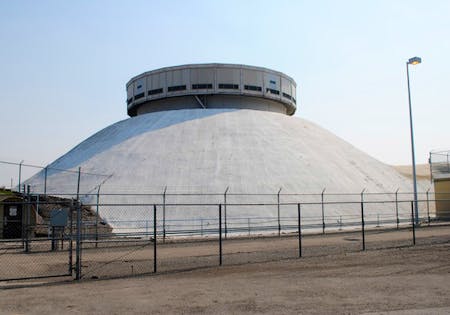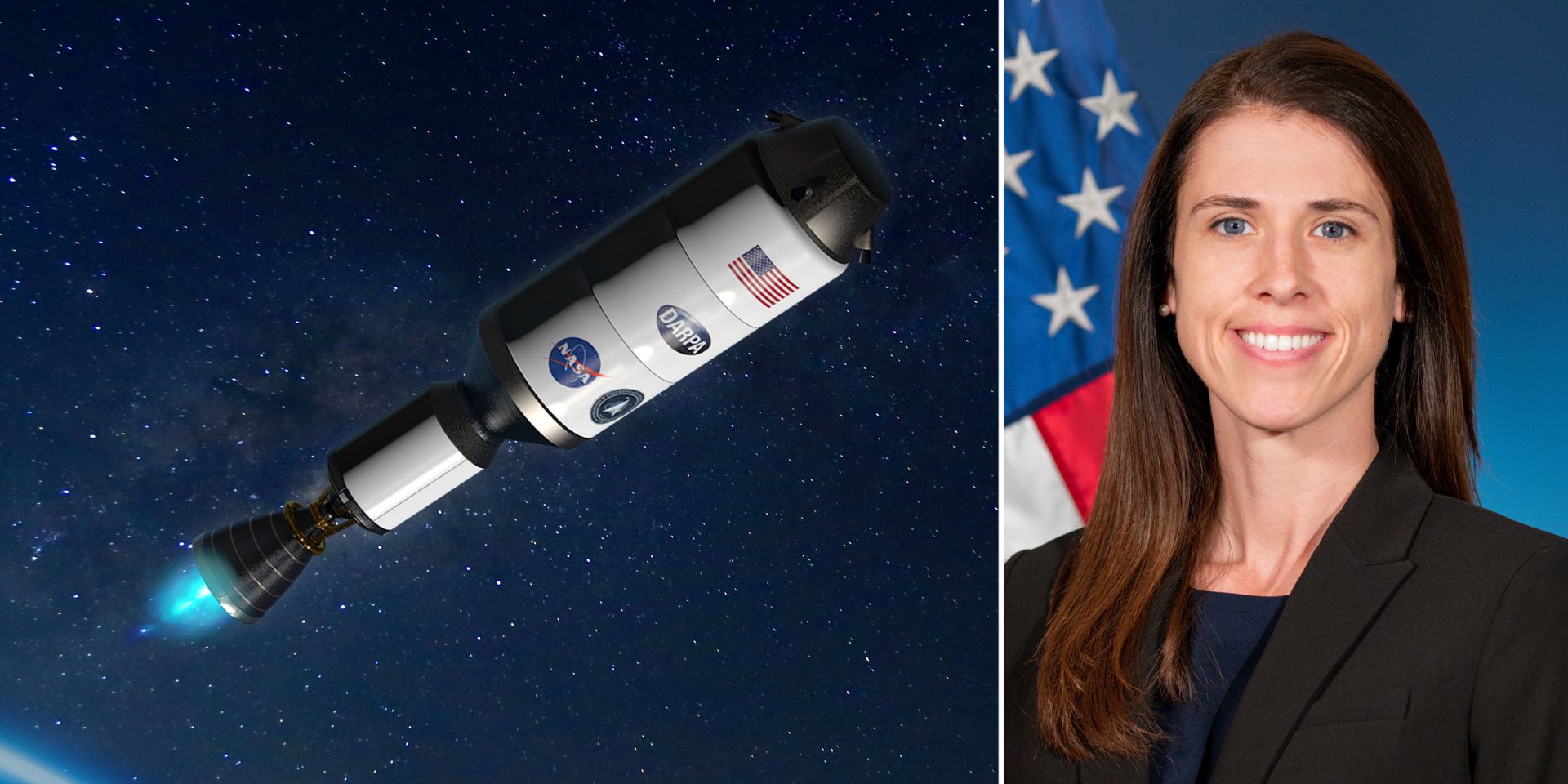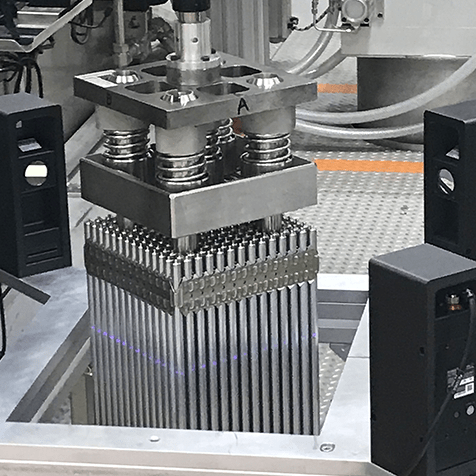The former Zero-Power Physics Reactor cell at INL’s Materials and Fuels Center could be home to the MCRE. (Photo: INL)
SRNS Internship Program students sign and accept their full-time position offers at the Savannah River Site as SRNS executives, managers, and mentors look on (Photo: SRNS)
Dozens of students from the Savannah River Nuclear Solutions (SRNS) Internship Program were recently offered a chance at full-service positions during what SRNS called a signing day event held at the Department of Energy’s Savannah River Site, near Aiken, S.C.
Concept art of the six-module Carbon Free Power Project, to be sited at INL. (Image: NuScale)
CFPP LLC, the limited liability company established by Utah Associated Municipal Power Systems (UAMPS) in 2020 to bring its Carbon Free Power Project to fruition, has applied to the Nuclear Regulatory Commission for a limited work authorization (LWA) to permit certain early project construction activities prior to the issuance of a combined license (COL). In a July 31 news release, CFPP said that should its application be approved, early-scope construction on the small modular reactor project would likely begin in mid-2025.
Vogtle-3 (Photo: Georgia Power)
To the ears of the nuclear community, the news from Georgia Power this morning may sound a bit like “Ode to Joy” from Beethoven’s Ninth: After years of delay, Unit 3 at the Vogtle nuclear power plant has entered commercial operation, becoming the first newly constructed power reactor in the United States in more than 30 years and the nation’s first Westinghouse-supplied Generation III+ AP1000 unit to be placed into service. The new unit joins Vogtle-1 and -2—1,169-MWe four-loop pressurized water reactors that entered commercial operation in the late 1980s.
The Vogtle-4 control room. (Photo: Georgia Power)
The Nuclear Regulatory Commission has authorized Southern Nuclear Operating Company to begin loading fuel into Unit 4 at the Vogtle nuclear expansion site near Waynesboro, Ga., making the unit the second reactor to reach this milestone in the agency’s combined license process—a little less than one year after Vogtle-3. (Prior to 1989, reactors were licensed under a two-step process, requiring both a construction permit and an operating license.)
An aerial view of Westinghouse’s Springfields Fuel Fabrication Facility, near Preston, Lancashire, in northwestern England. (Photo: Westinghouse)
Through its now one-year-old Nuclear Fuel Fund, the U.K. government has awarded Westinghouse three grants to upgrade and expand the Springfields Fuel Fabrication Facility to support Britain’s next-generation nuclear reactors, the American-based company announced yesterday.
Concept art showing Project Harmonia’s RSG for lunar surface missions. (Image: Zeno Power)
NASA has selected 11 companies, including Zeno Power, to develop technologies that could support long-term exploration on the moon and in space. The technologies range from lunar surface power systems to tools for in-space 3D printing, which will expand industry capabilities for a sustained human presence on the moon through the Artemis program, as well as other NASA, government, and commercial missions.














